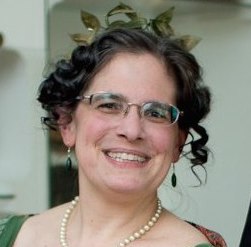Continuing on with my little celebration of the centennial year of the foxtrot:
I’ve discussed before how the two-step and sliding sequences similar to the four-slide galop of the nineteenth century were incorporated into the foxtrot in its earliest years. Other than one 1919 variation from Charles Coll, the two-step sequences described were generally symmetrical, with even numbers of two-steps either in sequence or broken up by walking steps. Slides were generally done in sets of four.
Here’s another pair of simple “glides” from Edna Stuart Lee’s Thirty Fox Trot Steps (New York, 1916) that break that pattern with single two-steps and a set of three slides. The “Right Glide” and “Left Glide” are very accessible variations for foxtrot beginners.
The steps below are given the for the gentleman, who moves forward along the line of dance while the lady dances opposite, starting with her right foot and moving backward. The counts given are beats, at two beats to the measure.
The first sequence is extremely simple:
The Right Glide
12 two walking steps (left, right)
3&4 two-step (left-right-left)
5&6&7&8 slide-close-slide-close-slide-close-step (right-left-right-left-right-left-right)
The last four counts are a four-slide galop. There is no turning; the gentleman simply angles his left shoulder diagonally forward along the line of dance for the two-step then shifts counter-clockwise to have his right side to line of dance for the sliding sequence.
The second sequence is a little more unusual:
The Left Glide
12 two walking steps (left, right)
3&4&5 slide-close-slide-close-step (left-right-left-right-left)
6&7 two-step (right-left-right), making a quarter-turn counter-clockwise
As Lee expresses it, the final two-step turns the dancers “at right angles to [their] former direction”, which makes this an excellent sequence for taking corners.
Note the 3&4&5 is a three-slide, not a four-slide. The sequence is deliberately asymmetrical to allow the dancers to “gain” a beat, which has the effect of changing the lead foot against the music. The gentleman’s left foot will now be stepping on the second (weaker) beat of a measure and the right foot on the first. This was not a big issue in the 1910s; the famed dancer Maurice Mouvet started his foxtrot sequences on the gentleman’s right foot, so taking a single step with the left foot on count 8 as filler will set the dancers up nicely for a Maurice-style sequence. But if the dancers really prefer it the other way around, the simplest “fixes” are to just do the Left Glide twice in succession (perfect for the narrow end of a room with two corners close together) or to do a single “cortez” as described by the Castles.
A final word of advice from Lee when dancing the Left Glide:
“Do not attempt to cross the room in the three slides, as though you were on an ice pond.”
Possibly she spoke from experience: the cover photo on her book, which I do not have the right to include here, shows Maurice and Florence Walton posing on ice skates at a rink or pond.


Leave a Reply